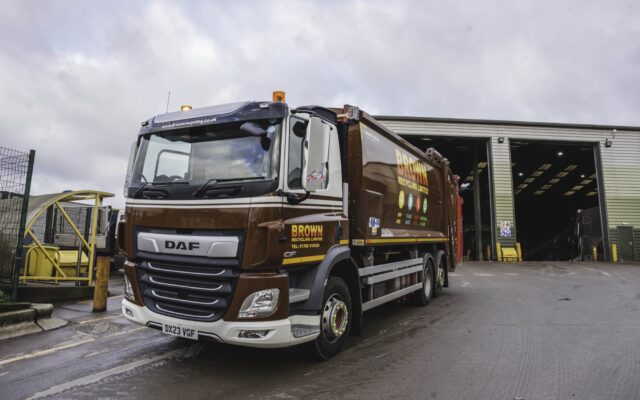
At Brown Recycling we are proud to be the leading, independent provider of total waste management and recycling services to businesses across Staffordshire, Cheshire and the Midlands. We also provide a 5-star skip hire service to households and commercial businesses across our region.
We provide reliable, cost effective and sustainable waste management and commercial waste collection for every type of business. From a local shop needing a weekly wheelie-bin collection, to multi-site manufacturing businesses with specialist waste disposal requirements, we have the right solution for your needs. Contact our expert team to find out how we can help.
See all sectors

Total Waste Management With Brown Recycling
As a family-owned and managed business we work to the highest standards of safety, compliance, sustainability and service in all we do. And with nearly 100 years in the business, we’re experts in every aspect of waste management.
Every day we use our expertise to advise customers on the most effective and efficient waste management solutions for their specific requirements, ensuring waste is collected, processed and recycled sustainably and compliantly. We work to a zero waste to landfill target, supporting our customers to achieve their sustainability goals.
From skip hire to trade waste, recycling, scrap metal trading, hazardous waste and secure destruction, for households, single-site retail outlets or multi-site businesses, we can handle it all.
Our loyal and satisfied customers choose to work with us for our 99% on time service delivery and our zero to landfill commitment for waste processed at our three sites in Stoke-on-Trent.
Want to learn more about what we do? All you need to do is get in touch.
Call us on 0800 998 1069 to tell us what you need or complete our Get a Quote form. We’ll provide a cost-effective tailored quote for your waste requirements.
Once you’re happy with our quote, pay online, set up your direct debit and open an account to access all your reports and invoices in our online Customer Portal.
We’ll deliver your waste container(s) and make sure they fit your site. We aim to do this within 24 hours.
We’ll collect your waste as agreed. With our 99% service success you can be assured of a hassle-free experience every time.
Sustainable waste management is central to our business. Our daily focus on recycle, recover and reuse helps our customers minimise their waste and supports our zero waste to landfill commitment. Find out more about our journey to becoming a sustainable waste management business and how we help customers achieve their sustainability goals too.

This website uses cookies to enhance your browsing experience and deliver personalised ads. By clicking “Accept All Cookies”, you agree to the storing of cookies on your device to enhance site navigation, analyse site usage, and assist in our marketing efforts.



























